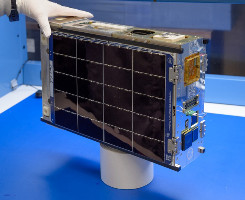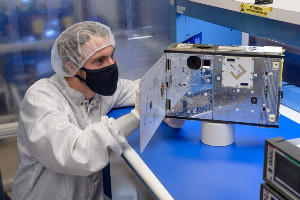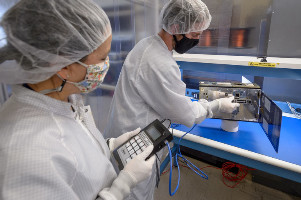| Spacecraft | PACE-1 (Payload Accelerator for CubeSat Endeavors) |
|---|---|
| Type | CubeSat |
| Units or mass | 6U |
| Status | No signal? (No reports found and object not identified in Space-Track as of 2021-08-17, listed as Failure in NASA's CubeSat Fleet Missions Database as of 2022-01-01) |
| Launched | 2021-06-30 |
| NORAD ID | 48909 ? |
| Deployer | ? |
| Launcher | Falcon 9 (Transporter-2) |
| Organisation | NASA Ames Research Center |
| Institution | Space agency |
| Entity type | Government (Civil / Military) |
| Headquarters | US |
| Oneliner |
Perform a set of experiments to demonstrate the Advanced Development Projects (ADP) technology. |
| Description |
PACE-1 payloads: Variety of flight platforms – independent, commercial, or NASA’s Advanced Development Projects, or ADP, avionics system platform – can host payloads on PACE flights. PACE’s second orbital flight will host payloads on NASA's ADP avionics system platform. ADP’s platform is a modular, low-cost avionics architecture paired with commercial off-the-shelf CubeSat components. PACE’s second orbital flight mission, PACE-1, will perform a set of experiments to demonstrate the ADP technology, kicking off a series of flights to follow. The PACE team will develop, test, and operate the projects, each utilizing the ADP platform. Payloads for PACE missions come from within NASA or other US Government agencies, small businesses and other industry, academic institutions, and research laboratories. In addition to demonstrating the ADP architecture, PACE-1 also supports four technology payloads. ADP’s avionics core is currently built into a six-unit CubeSat form but can adapt to other form factors. The core provides the supporting systems to operate the spacecraft and the payloads it carries. The satellite is roughly the size of two large loaves of bread, stacked side-by-side. The avionics core occupies a third of the spacecraft’s interior, leaving plenty of room to integrate various payloads. ADP first flight will demonstrate a switching capability that allows multiple GPS and radio communications systems to “take turns” receiving signals. These systems use a single antenna attached to the spacecraft rather than using multiple dedicated antennas, as it’s typically done. For the PACE-1 spacecraft, this means that the amount of surface space needed for antennas is cut in half, freeing up space for surface-mounted payloads such as an attached radio frequency tag and optical experiments hardware. Components of ADP’s supporting avionics can be configured for use in earlier-stage tests, such as benchtop lab tests or suborbital flights. This flexible approach simplifies the logistics of testing payloads in different test environments, helping researchers speed their technologies through the maturation process. The ADP platform is developed by the PACE team at Ames; Dayne Kemp is the principal investigator. PACE is managed by NASA’s Ames Research Center in California’s Silicon Valley and is funded by the Small Spacecraft Technology program within NASA’s Space Technology Mission Directorate. |
| Results |
Marked as Failure in the NASA SmallSat/CubeSat Fleet Missions Database. |
| Sources | [1] [2] |
| Photo sources | [1] |
| Keywords | License Plate Identification Tag, Tracking Enhancement Device |
| On the same launch |
|
Last modified: 2023-12-26



